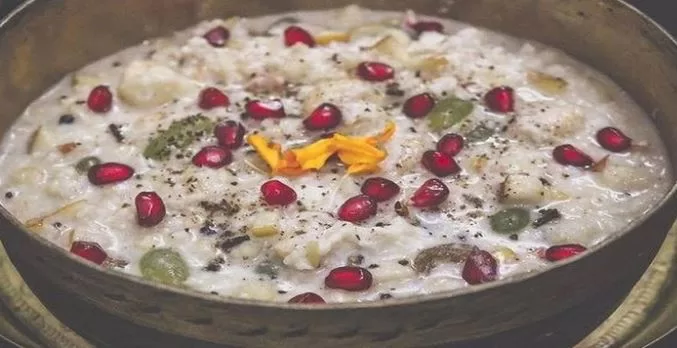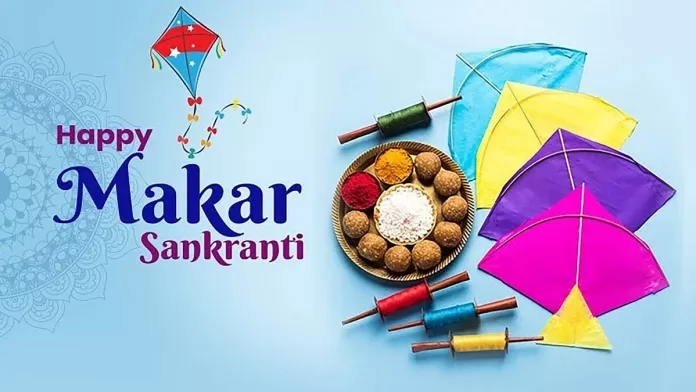Makar Sankranti is a Hindu festival celebrated in various parts of India. It is celebrated every year on the 14th of January and it marks the sun’s dakshinayana to uttarayana journey. The festival is celebrated with the lighting of bonfires, flying kites, and offering prayers to the solar deity, Surya. In some parts of India, it is associated with the beginning of the harvest season.
The movement of the Sun from one zodiac sign into another is called Sankranti and as the Sun moves into the Capricorn zodiac known as Makar in Hindi, this occasion is named Makar Sankranti in the Indian context. It is one of the few Hindu Indian festivals which are celebrated on a fixed date i.e. 14 January every year (or maybe sometimes on 15 January).
Makar Sankranti 2023, will be celebrated on January 15.
Makar Sankranti 2023 Shubh Muhurat and Puja Vidhi
As per drikpanchang.com
Makara Sankranti Punya Kala – 07:15 AM and to 05:46 AM on January 15
Duration – 10 hrs 31 mins
Makara Sankranti Maha Punya Kala – 07:15 AM to 09:00 AM on January 15
Duration – 01 hr 45 mins
Makar Sankranti Significance
Makar Sankranti is the day when the glorious Sun-God begins its ascendancy and entry into the Northern Hemisphere and thus it signifies an event wherein the Sun-God seems to remind their children that ‘Tamaso Ma Jyotir Gamaya’- may you go higher & higher, to more & more Light and never to Darkness.
To Hindus, the Sun stands for knowledge, spiritual light, and wisdom. Makar Sankranti signifies that we should turn away from the darkness of delusion in which we live, and begin to enjoy a new life with bright light within us to shine brighter and brighter. We should gradually grow in purity, wisdom, and knowledge, even as the Sun does from the Day of Makar Sankranti.
Makar Sankranti Celebration
Makar Sankranti is celebrated throughout India and is known by various names such as Magh Bihu in Assam, Maghi in Punjab, Maghi Saaji in Himachal Pradesh, Maghi Sangrand or Uttarain (Uttarayana) in Jammu, Sakrat in Haryana, Sakraat in Rajasthan, Sukarat in central India, Pongal in Tamil Nadu, Dahi Chura in Bihar, Makar Sankranti in Odisha, Karnataka, Maharashtra, Goa, Uttar Pradesh, Uttarakhand (also called Uttarayani) or as simply, Sankranti in Andhra Pradesh and Telangana. On Makar Sankranti, the Sun god is worshipped along with Vishnu and goddess Lakshmi throughout India
In Odisha, people prepare Makar Chaula (uncooked newly harvested rice, banana, coconut, jaggery, sesame, Rasagola, Khai/Liaa, and chhena puddings for naivedya to gods and goddesses. The withdrawing winter entails a change in food habits & intake of nourishing and rich food. Therefore this festival also holds immense scientific significance.

Devotees also worshiped the sun god at the great Konark temple with great fervor and enthusiasm as the sun started its annual swing northwards, according to various Indian calendars. According to the Sun’s movement, the days from this day onwards become lengthy and warmer and so the Sun-God is worshiped as a great benefactor.
Makar Mela is observed at Dhabaleswar in Cuttack, Hatakeshwar at Atri in Khordha, Makar Muni temple in Balasore, and various deities in each district of Odisha. In the Lord Jagannath Temple, this festival is observed as Nabanki and ‘Uttarayana Yatra’.
In Mayurbhanj, Keonjhar, Kalahandi, Koraput, and Sundargarh where the tribal population is more, the festival is celebrated with great joy. They have been celebrating this festival with great enthusiasm. They sing, dance, and enjoy. Many tribes in our country start their New Year on the day of Sankranti by lighting bonfires, dancing, and eating their particular dishes sitting together.

